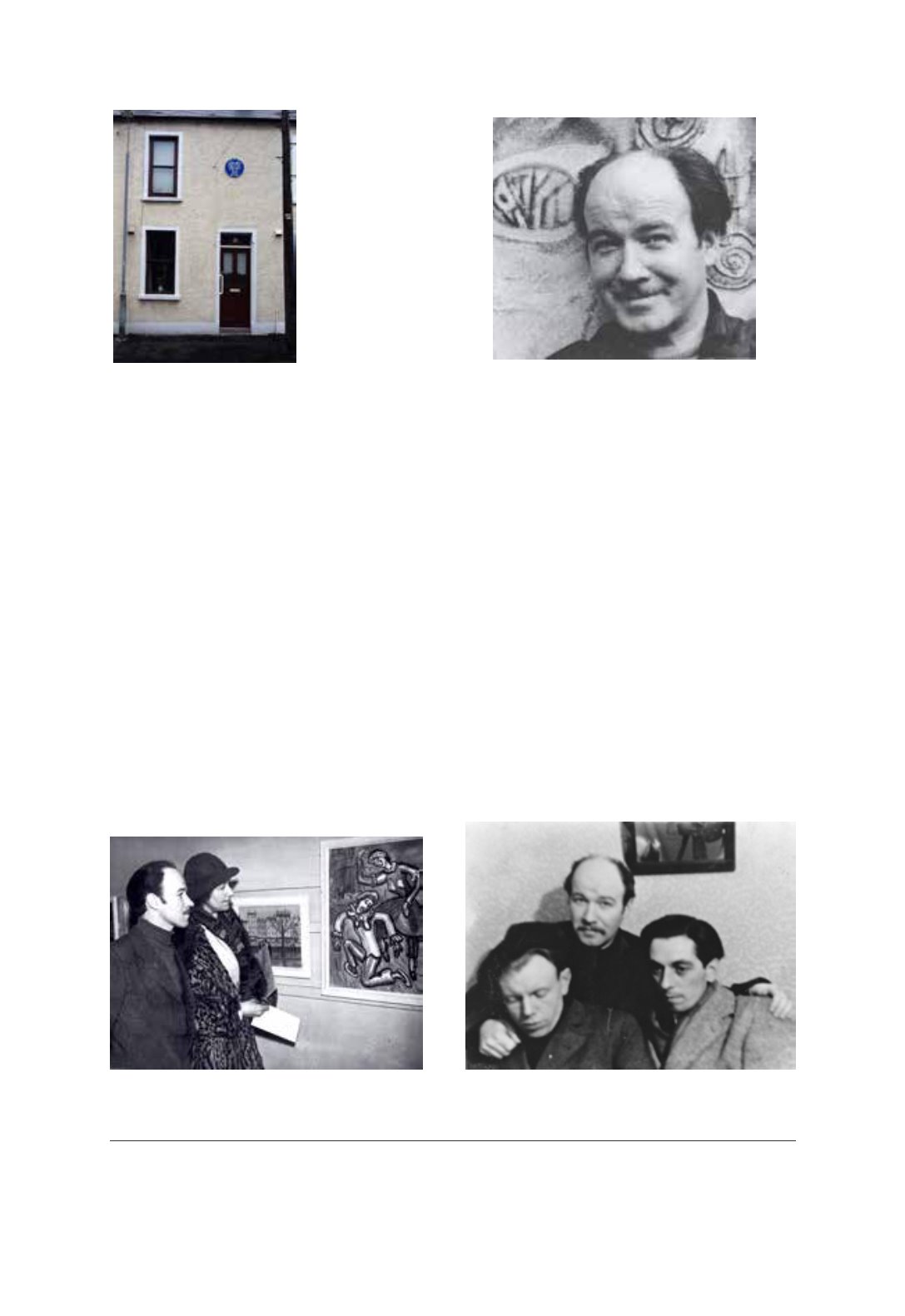

14
At a Feis exhibition in May 1943, Campbell met Gerard (‘Gerry’) Dillon, who had ‘twinkling
eyes in a round, merry face’.
16
Describing himself as being ‘stupidly shy of people’,
17
Dillon
found that the works of Marc Chagall and Sean Keating made him want to paint. Campbell
was first encouraged to paint by Dillon, who introduced him to friends Daniel O’Neill and
Tom Davidson, the pianist. A Nationalist from the Falls Road area of Belfast, Dillon left
school at fourteen to begin work as an apprentice house painter. Living in London in the
late 1930s, he found tubes of paint and brushes in a cupboard and started painting. He is
recorded as saying, ‘Once I started this [painting] I never stopped.’
18
On a visit to the west
of Ireland before the outbreak of war in 1939, travel restrictions forced him to remain in
Ireland. He subsequently moved to Dublin and became part of a thriving artistic community,
holding his first solo exhibition in 1942 at the Country Shop, opened by Mainie Jellett.
16
Percy Dymond, ‘Gerard Dillon: He Always Wanted to Be an Artist’,
Belfast Telegraph
, 27 October 1956.
17
Gerard Dillon in ‘Gerard Dillon of Dublin’, Maxwell Galleries, 27 July–21 August 1954.
18
Dillon quoted in James White,
Gerard Dillon: An Illustrated Biography
, Wolfound Press, 1994, p. 32.
fig.14: Gerard Dillon’s home, Lower Clonard
Street, Falls Road, Belfast
fig.15: Gerard Dillon
fig.16: Gerard Dillon and Mainie Jellett at the
opening of his first solo exhibition at the Country
Shop, 1942
fig.17: Gerard Dillon, Tom Davidson and Thomas
McCreanor, London 1950’s



















